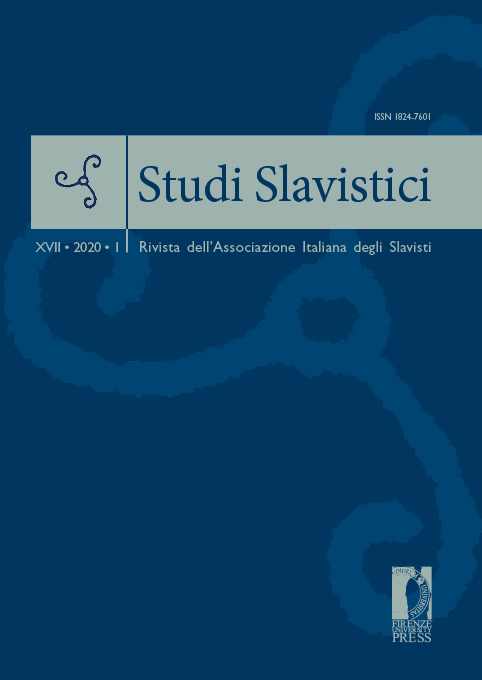Myth and ‘New Russian Realism’. Alisa Ganieva’s Rewriting of the Caucasian Tradition in Prazdničnaja Gora
Published 2020-05-23
Keywords
- Myth,
- Cob,
- Dagestani Culture,
- Contemporary Russian Literature,
- Ganieva
- New Russian Realism,
- Twins ...More
Funding data
-
Ministero dell’Istruzione, dell’Università e della Ricerca
Grant numbers Prin 2015
Abstract
According to Lejderman and Lipoveckij, the creation of a new mythology and, in general, the use of myth is a pivotal feature of contemporary Russian literature, with specific reference to the post-Soviet era (2003: 537-538). E.I. Kulakovskaja also retraces its presence in a new artistic project, the so-called ‘new Russian Realism’. In her prose works, Alisa Ganieva (1985-), one of the ‘new Russian realists’, makes creative use of Greek, Slavic, and Avar myths. Notably, her first novel Prazdničnaja gora (2012, translated into English as The Mountain and the Wall, 2015) is imbued with mythology. The present essay is focused on Ganieva’s rewriting of the myth of Cob (Цоб), the Avar Lord of the sky, and his twin children, Bachargan and Modu in The Mountain and the Wall. Ultimately, this analysis demonstrates that through the deconstruction and rewriting of Cob’s myth, Ganieva reaffirms the central role women play as a vital principle in society and, most importantly, in the field of art. Read against the background of the present-day Dagestani society, Ganieva’s aesthetic choice proves to be revolutionary.


